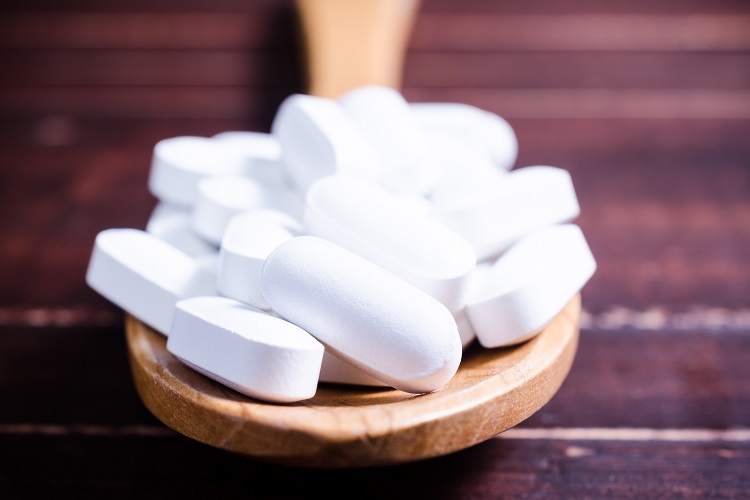
Contributed by Staff Writer for Addiction Hope and Eating Disorder Hope.
What is it?
Robitussin® is the brand name for the cough medicine containing dextromethorphan [1]. Its relative by name only, Robitussin A-C®, is a cough syrup containing combinations of codeine, pheniramine, and guaifenesin; 1 dose contains approximately 100 mg guaifenesin, 10 mg of codeine, consisting of approximately 3.5% alcohol [2].
In other words, Robitussin® works through the use of dextromethorphan, a cough suppressant intended for short-term use to ease the effects of a dry and hacking cough, while Robitussin A-C® uses different pharmacological agents to aid in symptom management [2].
When ingested, codeine’s opioid effects on the body contribute to pain relief and signal the brain to dampen the cough reflex [3]. Pheniramine has an antihistamine response, while guaifenesin loosens the mucous to allow it to be cleared from the throat and chest by coughing [3].
Risk of Misuse
 In the United States of America, drug overdose is considered the leading cause of accidental death with 47,055 lethal drug overdoses reported in 2014 [6]. Of these, 18,893 overdose deaths were related to prescription opioid pain relievers, such as codeine [6].
In the United States of America, drug overdose is considered the leading cause of accidental death with 47,055 lethal drug overdoses reported in 2014 [6]. Of these, 18,893 overdose deaths were related to prescription opioid pain relievers, such as codeine [6].
Despite the fact that Robitussin A-C® is a Schedule V – which, according to the Controlled Substances Act (CSA), makes it a substance with a smaller potential for abuse then 4 other classes of substances– there is an alarming trend of Robitussin A-C® abuse [3].
In 1999, the Texas Commission on Alcohol and Drug Abuse released an article titled Sipping on Syrup in order to highlight the misuse of opioid cough syrup, almost as a stand-in for heroin [4].
Specifically, some users reported mixing the syrup with beverages in a club or bar, while others drank the syrup straight from a Styrofoam container [4]. In the year the article was written, the authors indicated that an 8-ounce bottle of codeine cough syrup could fetch $200 on the street [4].
Currently, there is a trend among younger users to use codeine cough syrup to create an opioid beverage of abuse, reiterating that opioid cough syrup abuse is a current issue bridging socioeconomic factors. In 2015, the National Institute on Drug Abuse reported that approximately 5 percent of grade 12 students disclosed abusing cough medicine [7].
Further to this, just as concerning, approximately half of adolescent respondents have stated that they feel over the counter medications are safer to use, while approximately 70% of those sampled indicated their drugs are found in the home medicine cabinet [8]. These factors further contribute to the likelihood that an over the counter cough syrup like Robitussin A-C® might be abused [8].
Misuse
 In popular music first surfacing in the 1990s, terms like “syrup,” “purple drank,” “sizzurp,” and, “lean” surfaced, referencing the abuse of prescription strength codeine and promethazine (an antihistamine) cough syrup, either mixed with alcohol, soda beverages, or other mixtures.
In popular music first surfacing in the 1990s, terms like “syrup,” “purple drank,” “sizzurp,” and, “lean” surfaced, referencing the abuse of prescription strength codeine and promethazine (an antihistamine) cough syrup, either mixed with alcohol, soda beverages, or other mixtures.
Taken in enough quantities, the codeine results in a mild euphoric feeling, while the promethazine has a sedative effect [5]. Codeine-promethazine cough syrup, however, is only available with a prescription, while Robitussin A-C® is more readily available for abuse due to differing national regulations.
Robitussin A-C® is abused in a manner similar to codeine-promethazine, as a sufficient quantity of this combination medication results in a feeling of intoxication and lack of coordination, or “leaning” [4].
To provide some clarification between effects of different medications, Robitussin is often associated with the term “robo-tripping”, however this is not the effect of Robitussin A-C®. The term “robo-tripping” resulted from the abuse of Robitussin containing dextromethorphan, which creates a dissociative effect [4].
Conversely, abuse of Robitussin A-C® results in feelings of sedation and intoxication, a result from the mixture’s depressant effect upon the nervous system.
Side Effects
Clearly, ingesting sufficient quantities of Robitussin A-C® will provide users with a high, however, this is not without a cost. Like with any opioid substance, the list of side effects and risks are high.
For instance, side effects of codeine use include constipation, drowsiness, nausea, dry mouth, and vomiting. In addition to the desired high, users have reported that the feelings of lethargy and fatigue last longer than they would like, commenting that a perpetual feeling of fatigue is experienced [4].
 Furthermore, users have reported feeling irritability, anger, and volatile mood [4]. Regular use of Robitussin A-C® results in the regular introduction of codeine and other substances into the body, which act upon mu-receptors in the brain to decease feelings of pain.
Furthermore, users have reported feeling irritability, anger, and volatile mood [4]. Regular use of Robitussin A-C® results in the regular introduction of codeine and other substances into the body, which act upon mu-receptors in the brain to decease feelings of pain.
The brain adjusts its natural production of certain neurotransmitters as a result, contributing to tolerance and eventual dependence. As an opiate, codeine results in physical, or tissue, dependency, in which the interruption in regular use of codeine results in feelings of pain, contributing to the painful withdrawal symptoms associated with opiate dependency.
Further to this, abuse of Robitussin A-C® can result in respiratory issues due to the respiratory depressant effect of codeine. Finally, the risk of overdose is increased due to the mixture of opioid and sedative substances present within the combination syrup.
For those mixing the cough syrup with alcohol, the risk of overdose increases due to the added depressant effect of alcohol. In fact, the deaths of some prevalent artists in the music industry have been linked to opioid cough syrup [5].
Concluding Comments
Prescription opioid abuse is a global epidemic, with prescription opioids contributing to an unacceptably high number of overdoses. While available without a prescription, abuse of Robitussin A-C® runs some of the same risks, when taken in large enough quantities.
It is concerning that there appears to be a somewhat casual attitude toward the abuse of over the counter cough syrups containing codeine, with a false perception that abusing such substances hold little to no risk.
It is important for parents, health professionals, and consumers to be aware of the significant health effects of abuse of opioid cough syrup, such as Robitussin A-C®, in addition to the risks of developing dependency and related addiction issues.
References
[1] MedBroadcast. (2016). Robitussin: Uses, side effects, interactions. Retrieved February 20, 2016, from http://www.medbroadcast.com/Drug/GetDrug/Robitussin
[2] MedBroadcast. (2016). Robitussin AC: Uses, side effects, interactions. Retrieved February 20, 2016, from http://www.medbroadcast.com/Drug/GetDrug/Robitussin-AC
[3] United States Department of Justice. (n.d.). United States drug enforcement administration: Drug scheduling. Retrieved from http://www.dea.gov/druginfo/ds.shtml
[4] Elwood, William N. (1999). Leaning on syrup: The misuse of opioid cough syrup in Houston. Retrieved from Texas Commission on Alcohol and Drug Abuse website: http://www.utexas.edu/research/cswr/gcattc/documents/sippingonsyrup.pdf
[5] Dangerous Minds. (2013, June 11). Death By Sizzurp: DJ Screw and the lethal Purple Drank hip-hop subculture of Houston. Retrieved from http://dangerousminds.net/comments/death_by_sizzurp_dj_screw_and_the_lethal_purple_drank_hip-hop_subculture_of [6] Center for Disease Control and Prevention, National Center for Health Statistics, National Vital Statistics System, Mortality File. (2015). Number and Age-Adjusted Rates of Drug-poisoning Deaths Involving Opioid Analgesics and Heroin: United States, 2000–2014. Atlanta, GA: Center for Disease Control and Prevention. Available at http://www.cdc.gov/nchs/data/health_policy/AADR_drug_poisoning_involving_OA_Heroin_US_2000- 2014.pdf
[7] Johnston, L. D., Miech, R. A., O'Malley, P. M., Bachman, J. G., & Schulenberg, J. E. (December 16, 2015). "Use of ecstasy, heroin, synthetic marijuana, alcohol, cigarettes declined among US teens in 2015." University of Michigan News Service: Ann Arbor, MI. Retrieved 02/20/2016 from http://www.monitoringthefuture.org
[8] Drug Free World. (2016). Prescription drug abuse statistics: Overdoses & deaths. Retrieved February 20, 2016, from http://www.drugfreeworld.org/drugfacts/prescription/abuse-international-statistics.html
The opinions and views of our guest contributors are shared to provide a broad perspective of addictions. These are not necessarily the views of Addiction Hope, but an effort to offer discussion of various issues by different concerned individuals.
We at Addiction Hope understand that addictions result from a combination of environmental and genetic factors. If you or a loved one are suffering from an addiction, please know that there is hope for you, and seek immediate professional help.
Last Updated & Reviewed By: Jacquelyn Ekern, MS, LPC on June 10, 2017
Published on AddictionHope.com
